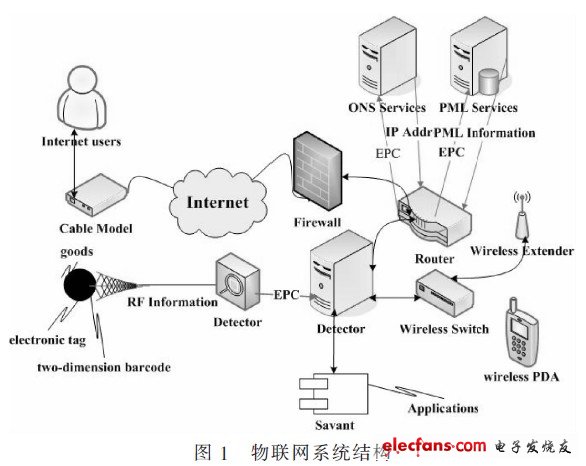In order to improve the efficiency of vegetable traceability, reduce the cost of vegetable tracking and monitoring, the actual process of vegetable production, positioning, tracking, monitoring and sales was analyzed through actual investigations of vegetable production enterprises. Internet of Things design scheme for vegetable traceability system. The RFID system, middleware, mobile phone or wireless PDA and other application components in the Internet of Things are mainly analyzed, and finally the realization method of the vegetable traceability system of a vegetable enterprise based on the Internet is analyzed. The system can not only provide consumers with detailed vegetable product information query, but also provide a good operating platform for the production management and vegetable quality and safety monitoring of enterprises. The application results show that it has obvious effect on improving vegetable traceability, reducing vegetable tracking and monitoring costs.
As an emerging item information network, the Internet of Things provides a basic platform for the automated tracking and tracing of items in the supply chain. Tracking and tracing items in the logistics supply chain is of great significance for achieving efficient logistics management and business operations.
With the development of the Internet of Things, its technology is also widely used in all aspects of agricultural production. At present, most vegetable production companies have been under the banner of green vegetables, but consumers cannot see whether vegetables are truly green food. With the Internet of Things, consumers can use the a la carte installed in the kitchen to send the required vegetable information to the manufacturer. The manufacturer will send the freshest vegetables to the door; after the vegetables are delivered to the home, consumers can use the Internet Check the barcode on the vegetable packaging to understand the whole process of this vegetable from seed to picking.
At the same time, after applying the Internet of Things technology, it can provide online ordering of green vegetables, so that the green vegetables can be delivered to consumers in time, ensuring the freshness of the food, and at the same time enabling consumers to inquire through commodity barcodes online to understand The whole process of the production of purchased vegetables guarantees that they are green and organic without adulteration, so that consumers can buy them with confidence.
Using the IoT-based traceability technology, each food is pasted with a QR code. Regardless of where the vegetables are sold, consumers can check the source of the vegetables, the fertilization and the use of medicines, so that consumers can clearly consume. Vegetable production enterprises can monitor the air, land temperature, humidity, air pressure, carbon dioxide concentration and other data related to planting in the vegetable production hall in real time. Not only that, when the hall is ventilated, when the vegetables are watered, and how the sunshade net is opened, many of the tasks that previously required management personnel to complete To complete the corresponding settings.
1 Related technologies and research status
In terms of IoT-related technologies, China has also made corresponding breakthroughs in software for wireless sensor networks, developing its own middleware software based on foreign operating systems. For example, the wireless sensor network middleware platform based on mobile agent developed by the Wireless Sensor Network Research Center of Nanjing University of Posts and Telecommunications, and the wireless sensor network development kit developed by Shenzhen United Technology. Domestic research institutions have put forward many innovative ideas and theories on theoretical research, such as wireless sensor network network protocols, algorithms, and architecture. In this regard, domestic Nanjing University of Posts and Telecommunications, Tsinghua University, Beijing University of Posts and Telecommunications, etc. have achieved some relevant theoretical research results.
Abroad, many universities in the United States have carried out a lot of work on wireless sensor networks. Such as CENS (Center for Embedded Networked Sensi-ng) laboratory, WINS (Wireless Integrated Netwok Sensors) laboratory and IRL (Internet Research Lab) of UCLA.
This article refers to the actual production processes of some vegetable companies, draws on the relevant research of traceability systems at home and abroad, and improves the original Web-based vegetable traceability system processing scheme by studying the Internet-based vegetable traceability system processing scheme. , And applied in actual projects, achieved good results.
2 Internet of Things and its working principle
2.1 Definition of Internet of Things
The Internet of Things (The Internet of Things) is defined as: through the radio frequency identification (RFID), infrared sensors, global positioning systems, laser scanners and other information sensing equipment, according to the agreed agreement, connect any item with the Internet, A network for information exchange and communication to realize intelligent identification, positioning, tracking, monitoring and management.
2.2 Workflow of the Internet of Things
The basic workflow of the Internet of Things is composed of four parts, namely, an information collection system (RFID system), a PML information server, a product naming server (ONS), and an application management system. The system structure of the Internet of Things is shown in Figure 1.

Description
It's a press laminated wood veneer in crosswise direction, based on high quality and selected birch veneers, stick together with Electrical thermosetting synthetic resins under high pressure and temperature.
Property
Good Electrical properties
Excellent absorption of transformer oil
High mechanical strength
Low and high temperature resistance
Good resistance to the abrasion and wear
Application
The product is mainly use in the electrical oil transformers applications as high electrical insulation material, like Pressure Beams, step blocks, pressure spare parts, top and bottom support coils, potential rings, pressure rings , spacers, etc. For his mechanical strength, laminated wood can be also use for many applications as abrasion resistance material under stress.
Transformer Laminated Wood Blocks
Wood Step Block,Transformer Step Block,Laminated Wood Supporting Blocks,Transformer Laminated Wood Blocks
Yingkou Dongyuan Electrical Insulation Board Co.,Ltd , https://www.dy-insulation.com